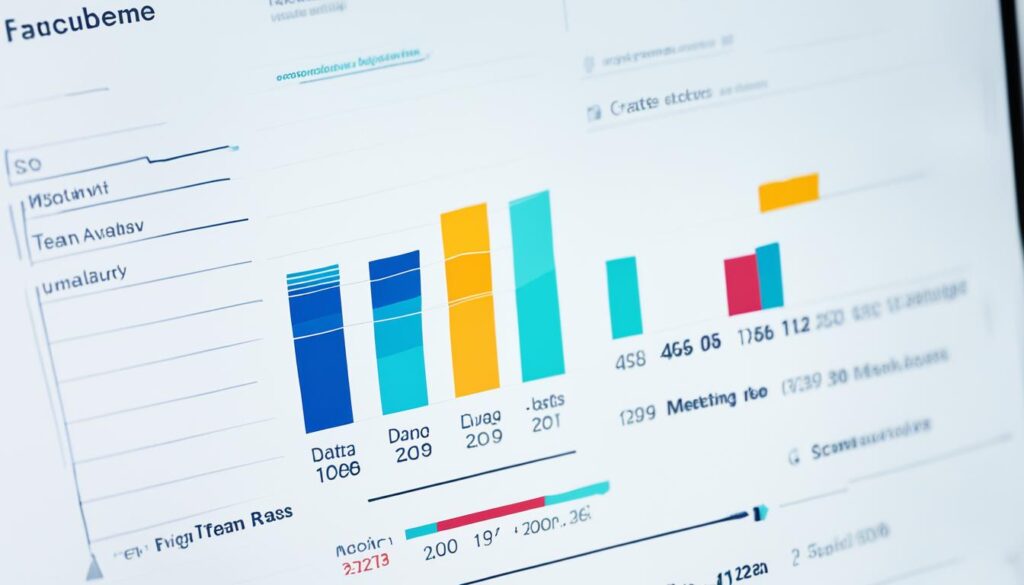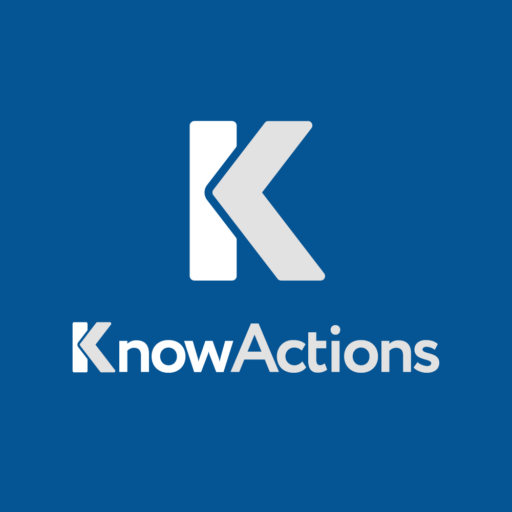Did you know that a staggering 55 million meetings occur daily in the United States, yet many are seen as ineffective12? This staggering fact highlights the urgent need for meeting efficiency in today’s fast-paced business landscape. As companies face productivity hurdles, a new field, meeting science, has emerged. It aims to improve how we conduct meetings.
Professor Joe Allen leads the charge in this field at the University of Utah. His work has attracted over $10 million in funding and has garnered the 2020 Emerald Literati Award1. By 2020, Allen’s research made up 25% of all studies in meeting science1.
The shift to hybrid work, spurred by Covid-19, has spotlighted the need for research on virtual and hybrid meetings1. This shift has led to the emergence of meeting scientists and doctors. They focus on optimizing time management and boosting productivity through better meeting practices.
Inefficient meetings significantly impact productivity. A Harvard Business Review study shows a strong link between too many meetings and lower productivity3. In fact, frequent interruptions, like too many meetings, can cut productivity by 10%, according to the University of California, Irvine3.
As companies aim to enhance meeting efficiency and adopt productivity hacks, meeting science offers crucial insights. By grasping the science of effective meetings, businesses can craft strategies to better manage time, increase productivity, and achieve better outcomes.
Key Takeaways
- 55 million meetings occur daily in the U.S., highlighting the need for efficiency
- Professor Joe Allen’s research has significantly advanced meeting science
- Hybrid work environments have increased focus on virtual meeting dynamics
- Excessive meetings can lead to a 10% decrease in productivity
- Meeting science offers valuable insights for improving workplace efficiency
- Time management strategies are crucial for optimizing meeting effectiveness
Understanding the Importance of Meeting Efficiency
In today’s fast-paced business landscape, the efficiency of meetings is paramount for success. Ineffective meetings can severely impact productivity and decision-making, underscoring the importance of a scientific approach to enhance meeting effectiveness.
The Impact of Inefficient Meetings on Productivity
Inefficient meetings can significantly drain resources and productivity. According to executives, 61% of time spent in decision-making meetings is ineffective, with only 37% noting their organizations make timely and high-quality decisions4. This inefficiency is further highlighted by the fact that the average person attends 62 meetings a month, with over half deemed a complete waste of time5.
The Role of Meeting Science in Modern Organizations
Meeting science is crucial for improving organizational efficiency. Research has pinpointed five key design elements that influence a meeting’s perception: the use of a meeting agenda, keeping minutes, punctuality, a suitable meeting environment, and a designated meeting leader6. By integrating these elements, organizations can refine their decision-making and engage stakeholders more effectively.
Key Benefits of Optimizing Meeting Effectiveness
Optimizing meeting effectiveness offers significant advantages for organizations. Setting meeting ground rules and distributing agendas beforehand can notably increase efficiency5. Additionally, 85% of executives who rate themselves as effective time managers emphasize the importance of scheduling and time allocation4. By focusing on these areas, companies can enhance their meeting outcomes and overall productivity.
“Focus time is essential for teams, as highlighted in a research study in the MIT Sloan Management Review.”
By embracing efficient meeting practices, organizations can revolutionize their decision-making processes, boost stakeholder engagement, and ultimately achieve better business outcomes.
The Rise of Workplace Meeting Champions
Workplaces are undergoing significant changes, and so are their meetings. A new class of experts, including meeting scientists and meeting doctors, is stepping forward to revolutionize traditional meeting cultures. These professionals aim to convert meetings into hubs for innovation and efficiency.
Meeting scientists delve into the dynamics of professional interactions, analyzing data to pinpoint what makes meetings effective. Their findings aid organizations in refining their collaborative processes. Meanwhile, meeting doctors diagnose and treat meeting-related issues, enhancing team communication and productivity.

Universities are recognizing this shift. The University of Reading, for instance, is conducting research on the effectiveness of contemporary meetings. Their studies encompass both in-person and virtual meetings, examining how collaborative tools can boost team interactions.
Organizations are adapting to these changes. Salesforce, for example, anticipates over 65% of its employees to work in the office one to three days a week, signaling a shift in workplace dynamics7. This evolution underscores the importance of effective meeting strategies in hybrid work settings.
The tech industry is at the forefront of reimagining meetings. At 18F, a government tech agency, they employ the 👼 emoji to indicate meeting cancellations, reflecting a growing preference for fewer, more focused meetings8. This strategy resonates with Jeff Bezos’s “Bias for Action” principle at Amazon, which advocates for decision-making with about 70% of the necessary information8.
As workplaces continue to evolve, meeting champions will be pivotal in shaping the future of collaborative work. Their expertise will aid organizations in achieving a balance between efficiency, effectiveness, and quality of life in the workplace7.
Leveraging Content Intelligence for Better Meetings
Content intelligence transforms meeting data into valuable insights, revolutionizing how organizations conduct and analyze their gatherings. By harnessing the power of data analysis, companies can significantly enhance their decision-making processes and overall meeting efficiency.
Collecting and Analyzing Meeting Data
The first step in leveraging content intelligence is gathering comprehensive meeting data. This includes meeting minutes, action items, and attendee information. With 65% of workers’ time spent in audio or video meetings, collecting this data is crucial for understanding meeting dynamics9.
Advanced productivity tools can automate the data collection process, ensuring accuracy and consistency. For instance, some platforms achieve 98% data accuracy in transcripts, providing a solid foundation for analysis10.
Transforming Data into Actionable Insights
Once collected, meeting data undergoes thorough analysis to uncover patterns, trends, and areas for improvement. This process can lead to significant enhancements in meeting efficiency. One study found a 17% increase in meeting efficiency when using AI-powered platforms for data analysis10.
“Data-driven insights are the key to unlocking meeting potential and driving organizational success.”
These insights can reveal opportunities to optimize attendee lists, resulting in more focused and productive meetings. Some organizations have seen a 50% decrease in meeting attendees without compromising knowledge-sharing or efficiency10.
Enhancing Decision-Making Processes
Content intelligence empowers leaders to make informed decisions based on concrete data rather than gut feelings. This approach minimizes guesswork and leads to more strategic outcomes. It’s particularly valuable given that 34% of employees desire more learning and development opportunities9.
By analyzing meeting data, organizations can identify skill gaps, tailor training programs, and allocate resources more effectively. This data-driven approach addresses the 85% of employees who feel dissatisfied with the support they receive from companies9.
Designing Effective Meeting Measurement Reports
Well-crafted meeting measurement reports are vital for deepening understanding and driving actionable insights. They utilize data visualization to turn complex information into simple formats. Charts and graphs make it easy for stakeholders to see key metrics and trends11.
Accessibility is crucial in report design. Reports must be readable for all team members, including those with visual impairments. This inclusivity is achieved through smart color choices, clear fonts, and image descriptions.

Reports should include contextual help for users. This feature offers extra information and explanations when needed. For instance, a tooltip explaining the link between long meeting hours and lower engagement scores can be very helpful11.
Reports should answer the “so what?” question by highlighting key findings and their implications. For example, knowing the ideal meeting size can help in deciding who to invite11. Icons and colors can also show where improvements are needed or where concerns exist.
By comparing data to benchmarks or targets, reports give context for evaluating performance. This method turns raw data into actionable insights. It empowers stakeholders to make decisions that improve meeting efficiency and overall productivity.
Meeting Efficiency: Strategies for Improvement
Meetings are vital in organizations but often disappoint. A staggering 67% of executives view meetings as failures, underscoring the need for better time management and productivity hacks12. To tackle this, let’s delve into strategies to boost meeting efficiency and enhance outcomes.
Setting Clear Objectives and Agendas
Clear objectives and structured agendas are key to meeting success. Leaders should aim for a five-to-one ROI ratio, expecting a minimum return of $10,000 from a $2,000 meeting13. By setting specific goals and time limits for each agenda item, you can maintain focus and productivity.
Encouraging Active Participation
To increase engagement, encourage participants to share their thoughts in three minutes or less. This method promotes critical thinking and speeds up discussions13. Tools like Miro for real-time idea organization can also enhance collaboration during remote meetings12.
Optimizing Attendee Lists
Successful meetings require only essential attendees to prevent time waste. Consider that middle management spends 35% of their time in meetings, while upper management can spend up to 50%12. By carefully selecting attendees, you can streamline decision-making and cut down on unnecessary costs.
Implementing Follow-up Procedures
Effective follow-up is vital for meeting success. Tools like Minutes.io for detailed meeting minutes and Otter for automatic audio transcription are invaluable12. These tools ensure action items are captured and progress is tracked post-meeting.
| Strategy | Tool | Benefit |
|---|---|---|
| Agenda Setting | Fellow | Collaborative input and accountability |
| Idea Organization | Miro | Real-time mind-mapping |
| Meeting Minutes | Minutes.io | Detailed note-taking template |
| Audio Transcription | Otter | Automatic meeting recording and transcription |
By adopting these strategies and utilizing the right tools, organizations can significantly enhance meeting efficiency. This leads to better time management and increased productivity in both in-person and remote settings.
The Power of Asynchronous Communication
Asynchronous communication has revolutionized the modern workplace. It empowers team members to engage and absorb information at their convenience, untethered by time zones and strict schedules14. This flexibility is especially advantageous for teams across various time zones15.
The surge in remote work has amplified the adoption of asynchronous communication tools16. Leaders of international firms champion this method, often relying on platforms like Loom for communication14.
Video recordings in asynchronous communication convey messages more distinctly than text. They utilize visual cues like facial expressions and gestures, enhancing comprehension14. This is particularly beneficial in fields like architecture and engineering, where swift review and solution dissemination can expedite decision-making14.
Asynchronous communication’s advantages go beyond mere productivity. It cultivates trust, autonomy, and accountability within teams, promoting a culture of accountability14. Workers often report achieving their highest levels of performance at home, where they can focus undisturbed15.
| Asynchronous Communication | Synchronous Communication |
|---|---|
| Allows delayed responses | Requires immediate responses |
| Facilitates deep work | Solves immediate problems |
| Reduces interruptions | Enhances interpersonal connection |
| Time zone friendly | Real-time interaction |
While asynchronous communication boasts numerous benefits, finding equilibrium is crucial. Synchronous communication, through video meetings, remains vital for addressing immediate issues and nurturing team bonds15. The essence is to adeptly combine both approaches to enhance productivity and foster effective team collaboration.
Balancing Synchronous and Asynchronous Communication
In today’s work environment, achieving a balance between synchronous and asynchronous communication is key for effective time management and productivity. With 89% of professionals seeking remote or hybrid work setups, organizations must adjust their communication strategies17.
Identifying Appropriate Communication Channels
The choice of communication channel depends on the task. Synchronous methods like remote meetings excel in real-time feedback and brainstorming. On the other hand, asynchronous tools such as document sharing and project management systems provide flexibility and deeper work opportunities18.
Maximizing Productivity with Meeting-Free Days
Meeting-free days can significantly boost productivity by allowing employees to engage in deep work without interruptions. This approach helps combat burnout and enhances work-life balance, which are significant challenges in remote work setups heavily reliant on synchronous communication18.
Leveraging Collaborative Tools for Effective Communication
Collaborative tools are vital for seamless communication in remote and hybrid teams. Yet, research indicates that many teams lack a unified approach to utilizing these tools effectively19. To address this, organizations should:
- Provide training on proper tool usage
- Develop clear guidelines for team communication
- Encourage transparency and discoverability in asynchronous communication
By adopting these strategies, teams can overcome communication hurdles and improve their efficiency in remote work settings1918.
| Communication Type | Best Practices | Tools |
|---|---|---|
| Synchronous | Limit participants, set agendas, record meetings | Video conferencing, instant messaging |
| Asynchronous | Define response times, provide resource space | Email, project management systems, wikis |
Measuring and Analyzing Meeting Outcomes
Efficient meetings are key to boosting productivity, yet many organizations find it hard to gauge their success. In 2020, the typical meeting clocked in at 2 hours and 14 minutes, underscoring the importance of concise, focused meetings. European employees attend up to 62 meetings each month, with half being deemed unnecessary, and 70% actually hindering real work20.
To enhance meeting efficiency, companies are embracing advanced analytics. Flowtrace, for example, syncs with Google Calendar, Zoom, and Slack to shed light on meeting health and team collaboration. It scrutinizes schedules, durations, frequency, and participant engagement, offering a detailed look at team performance21.
It’s vital to track key metrics to refine meetings. These metrics include attendance rates, punctuality, action item completion, and engagement levels. By keeping tabs on these, organizations can pinpoint areas for enhancement and apply productivity hacks. For instance, 91% of employees confess to daydreaming during meetings, pointing to a need for more engaging content and better time management20.
Utilizing AI-driven advice and industry benchmarks can also elevate meeting outcomes. By delving into vast data sets, companies can craft detailed KPIs and make strategic choices about their meeting culture. This strategy aids in striking a balance between collaboration and uninterrupted work time, ultimately lifting overall productivity and employee contentment21.




